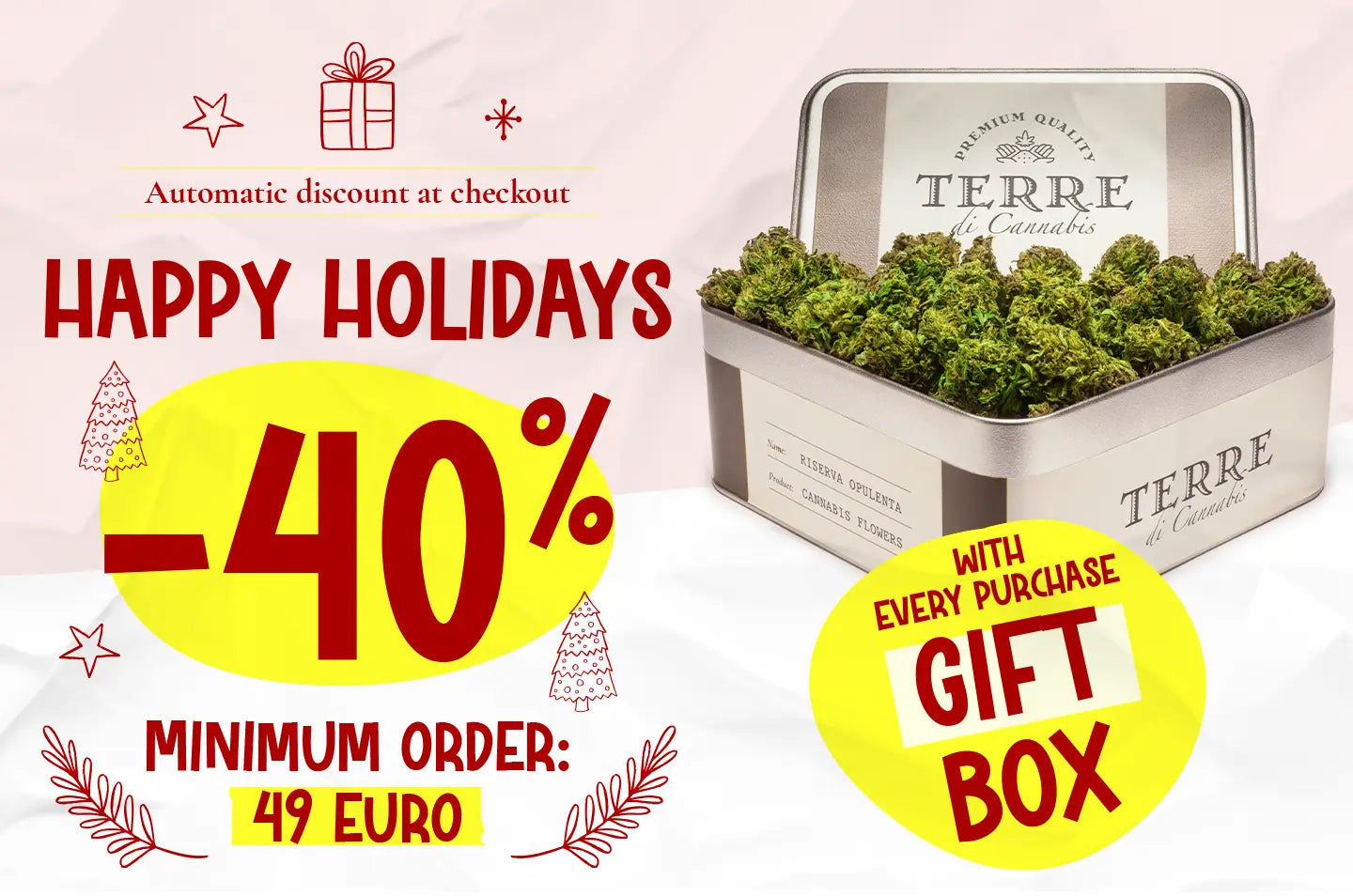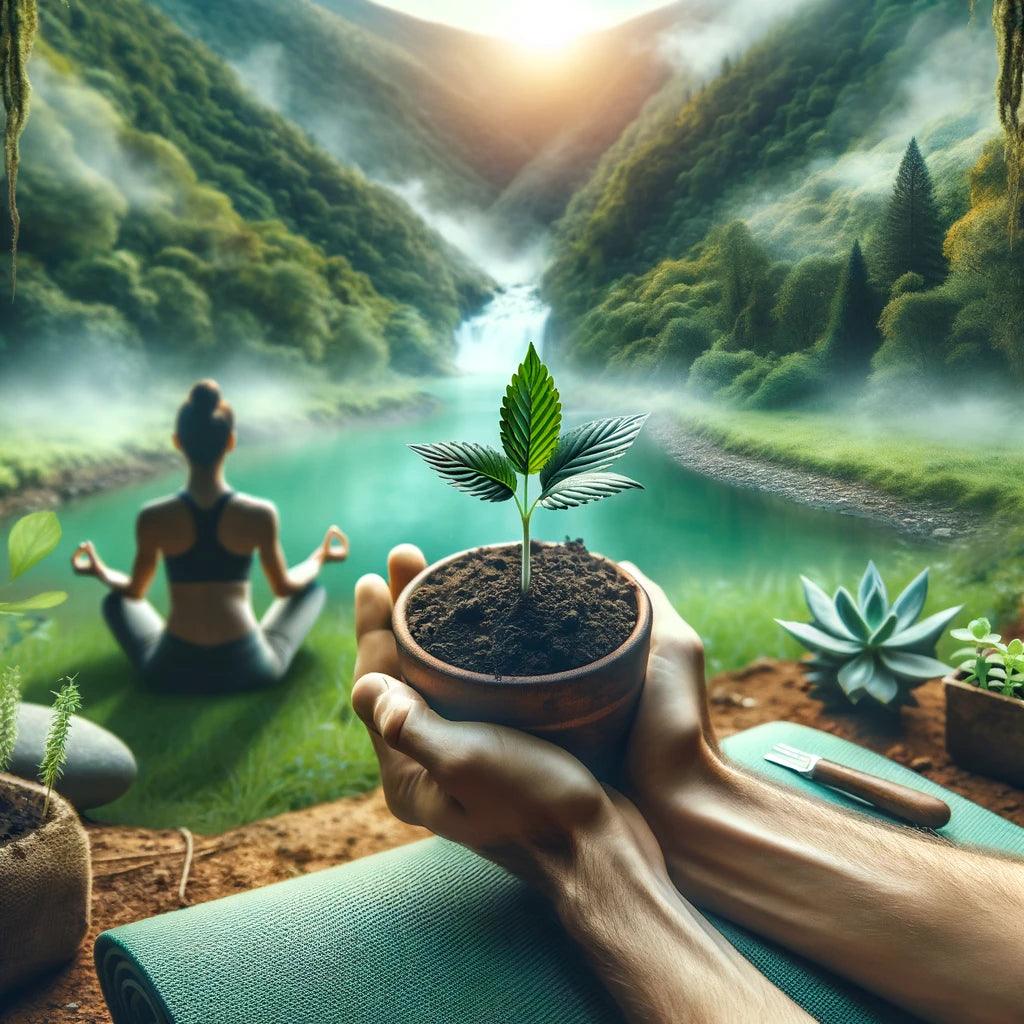There are a thousand ways to consume cannabis , but not all are the same. Smoking cannabis inflorescences is the most popular choice and the simplest solution, but marijuana can also be taken through a vaporizer, or it can be processed to make food products, which greatly amplify the effects. In the coffee shops of Amsterdam you can find many pastry products made with cannabis: ranging from brownies to muffins, up to space cakes, which are real cakes whose secret ingredient is THC.
Ingesting products prepared with THC is very different from smoking marijuana: the effect is more intense and long-lasting than that of a joint containing the same amount of substance. Cannabis is assimilated through the gastrointestinal tract, and the passage from the liver transforms THC into 11-hydroxy-THC, a molecule different from THC in chemical structure, responsible for amplifying the original effects of the cannabinoid.
The "high" arrives late , when the body has absorbed all the active ingredient. The risk is to overdo it while waiting for the effect to be felt, also thanks to the very pleasant appearance and flavor of these delicacies. Before 45-90 minutes the effect is almost non-existent , but it is always better to wait a little to be sure that this alternative experience does not transform the evening into something more demanding.
Why are edibles more potent than a joint?
The dietary intake of cannabis generates much more powerful effects than the classic methods of intake through the respiratory tract . Why? The effect of cannabinoids is amplified by their passage through the digestive system, which is very rich in receptors of the endocannabinoid system ; the active ingredients are assimilated by the organs through which they pass, producing a real explosion.
It is above all the passage through the liver that guarantees a greater reaction of the organism, and it is precisely this step that is missing when taking cannabis by combustion. Smoking cannabis brings psychoactive molecules directly to the bloodstream and brain, via receptors in the airways. Another difference between the two types of intake is related to the duration of the effects of the substance, depending on whether it is smoked or ingested. In fact, inhalation and aspiration have a rapid effectiveness (about 10, 20 minutes) and a relatively short duration (maximum 1 or 2 hours), while - when ingested - cannabis begins to make its effects felt after 45 minutes/1 hour and the effect lasts for 5 or 6 hours.
Decarboxylation: a fundamental step
Now that you have discovered what edibles are, you will surely want to unleash the pastry chef within you. So we'll explain what to do to prepare a space-cake worthy of the best coffee shops in Amsterdam. The first rule is mandatory: to prepare edibles you need to start with butter . In fact, cannabis is not water-soluble , therefore - in order to use it in the preparation of gastronomic products - it must be treated in the right way. The best way is to prepare marijuana butter, or cannabutter: knowing how to make it will ensure the success of the undertaking, offering you a powerful and unexpected high.
Before starting, you need to prepare the cannabis through the decarboxylation process. What is it about? It's the process needed to make your marijuana treats perform as expected . In its original state, in fact, THC comes in the form of THCA (tetrahydrocannabinolic acid). THCA does not generate the same effects as THC: cannabis must be subjected to intense heat to ensure that THCA transforms into THC , thanks to the elimination of the carboxyl group "A". It appears that THCA, when used correctly, exhibits the same therapeutic effects as THC, including anti-inflammatory and neuroprotective effects .
When cannabis is smoked or vaporized , decarboxylation is induced directly by the flame, which immediately releases cannabis terpenes and cannabinoids. However, the excessive heat of the flame can destroy some of the more volatile THC molecules. Vaporization, on the other hand, is a slightly more refined technique: the device heats up until it reaches the evaporation point of the terpenes and cannabinoids, allowing each substance to be almost completely assimilated.
How is cannabis butter prepared?
Cannabis butter can be prepared from the buds, but you can also use other parts of the plant and preserve the inflorescences for better use. The leaves , in particular, have a high cannabinoid content, higher than that present in stems or branches, thanks to a higher concentration of trichomes . Using a mix of leaves, stems and branches won't make you regret saving the best buds.
To make a perfect cannabutter you will need a stove, a wooden spoon, two sieves, a mixer and some plastic containers. The first step is to grind the herb with a mixer to make it as fine as possible: this will increase the contact surface and improve the extraction of the active ingredients when melting the butter. The process of making cannabis butter is based on the principle of fusion of the oils of the plant with the oils deriving from the butter , through heat: the two parts blend effectively, becoming a unicum. Once made, marijuana butter should be stored in the refrigerator for up to two weeks. If you want it to last longer it is better to store it in the freezer, cutting it into smaller blocks which will need to be defrosted before use.
Homemade edibles: how to dose cannabis?
Unfortunately, it is not always easy to calculate the right dose of marijuana to use for the preparation of butter. Edibles are sold in every state where marijuana has been legalized, and with legalization comes standardization of the product. In many American states where the use of marijuana has been legalized (such as Colorado, California and Washington) increasingly rigorous laws are being passed to control and regulate the potency and quality of marijuana sold to the public, regardless of whether it is intended for therapeutic or recreational users.
In Washington, for example, all Cannabis-based products available in the various authorized stores must report the total percentage of THC , and edibles cannot contain quantities greater than 10 milligrams. Colorado also allows a dosage of 10 milligrams of THC and most edibles are packaged in single-serving portions.
The effect of cannabis when ingested is amplified, and getting the doses wrong can play a trick on the unaware consumer. If the operation is completely artisanal, it becomes even more difficult. Doses vary greatly depending on the cannabinoid profile of the marijuana you are using. Today, a normal strain of Cannabis can contain 10 to 20% THC . If you cannot find reliable information on the strain you are using, the advice is to assume that it contains around 15% THC.
Considering these values, it is plausible to assume that each gram of weed (or 1000mg) will contain approximately 150mg of THC . So, if you are making cannabutter by mixing 500 grams of butter with 20 grams of marijuana (15% THC) you are essentially getting 500 grams of butter with a total of 3000mg of THC (20g x 150mg). In this case, each gram of butter will contain approximately 6mg of THC.






